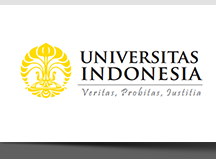Abstract
Urbanization in Indonesia is increasing population growth and demand for habitable housing, presenting challenges. This study assesses uninhabitable houses (RTLH) across regions and provinces, examining their relationship with drinking water, sanitation access, and regional and macroeconomic factors. Despite progress, significant gaps in access to improved water and sanitation persist. Using data from the Central Statistics Agency, findings show a slowed decline in RTLH from 2019 to 2021, with an increase in 2022, highlighting uneven development. The study also finds that higher education levels correlate with lower RTLH rates, while a larger informal labor force is linked to higher RTLH.
Bahasa Abstract
Urbanisasi di Indonesia meningkatkan pertumbuhan penduduk dan permintaan rumah layak huni, menimbulkan tantangan besar. Studi ini mengkaji rumah tidak layak huni (RTLH) di berbagai daerah, serta hubungannya dengan akses air minum, sanitasi, dan indikator wilayah serta ekonomi makro. Meskipun terdapat peningkatan, kesenjangan terhadap akses air bersih dan sanitasi masih besar. Data dari Badan Pusat Statistik menunjukkan penurunan RTLH melambat dari 2019 hingga 2021 dan meningkat pada 2022, mengindikasikan pembangunan yang tidak merata. Studi ini juga menemukan bahwa lama sekolah yang lebih tinggi berkorelasi dengan RTLH yang lebih rendah, dan penurunan persentase tenaga kerja informal berkorelasi dengan RTLH yang lebih rendah.
References
Adams, E. A., Boateng, G. O., & Amoyaw, J. A. (2016). Socioeconomic and demographic predictors of potable water and sanitation access in Ghana. Soc Indic Res 126, 673–687. doi: 10.1007/s11205-015-0912-y.
Agbadi, P., Darkwah, E., & Kenney, P. L. (2019). A multilevel analysis of regressors of access to improved drinking water and sanitation facilities in Ghana. Journal of Environmental and Public Health, doi: 10.1155/2019/3983869.
Ahmad, N., Ahmad, S., & Ali, S. (2000). Determinants of housing improvements in the city of Karachi. Pakistan Economic and Social Review Vol. 38, No. 2, 145-165.
Central Statistics Agency. (2019-2022, August). Keadaan Pekerja di Indonesia. From https://www.bps.go.id/publication/2022/12/07/2b8168cecb67a77ab7a6857d/keadaan-pekerja-di-indonesia-agustus-2022.html
Central Statistics Agency. (2020). Indikator Perumahan dan Kesehatan Lingkungan 2020. Jakarta: Badan Pusat Statistik.
Central Statistics Agency. (2021, April 8). Tingkat pengangguran terbuka (TPT) (persen). From https://jateng.bps.go.id/indicator/6/64/1/tingkat-pengangguran-terbuka-tpt-.html
Central Statistics Agency. (2022). Indikator perumahan & kesehatan lingkungan 2022. Jakarta: Badan Pusat Statistik.
Central Statistics Agency. (2022). Indikator perumahan dan kesehatan lingkungan 2022 [Housing and environmental health indicators 2022]. Jakarta: Badan Pusat Statistik.
Central Statistics Agency. (2022, December 19). Persentase rata‑rata pengeluaran per kapita sebulan untuk makanan dan bukan makanan di daerah perdesaan menurut provinsi, 2007-2022. From https://www.bps.go.id/statictable/2014/09/08/944/persentase-rata-rata-pengeluaran-per-kapita-sebulan-untuk-makanan-dan-bukan-makanan-di-daerah-perdesaan-menurut-provinsi-2007-2022.html
Central Statistics Agency. (2023, March 31). Kepadatan penduduk menurut provinsi (jiwa/km2), 2019-2021. From https://www.bps.go.id/indicator/12/141/1/kepadatan-penduduk-menurut-provinsi.html
Central Statistics Agency. (2023, February 8). Persentase Rumah Tangga menurut Provinsi dan Status Kepemilikan Rumah Milik Sendiri, 1999-2022. From https://www.bps.go.id/indicator/29/849/1/persentase-rumah-tangga-menurut-provinsi-dan-status-kepemilikan-rumah-milik-sendiri.html
Central Statistics Agency. (2023, February 8). Persentase rumah tangga yang memiliki akses terhadap hunian yang layak dan terjangkau menurut daerah tempat tinggal, 2015-2022. From https://www.bps.go.id/indicator/29/1242/1/ persentase-rumah-tangga-yang-memiliki-akses-terhadap-hunian-yang-layak-dan-terjangkau-menurut-daerah-tempat-tinggal.html
Central Statistics Agency. (2023, February 8). Persentase rumah tangga yang memiliki akses terhadap hunian yang layak dan terjangkau menurut provinsi (persen), 2020-2022. From https://www.bps.go.id/indicator/29/1241/1/persentase-rumah-tangga-yang-memiliki-akses-terhadap-hunian-yang-layak-dan-terjangkau-menurut-provinsi.html
Central Statistics Agency. (2023, January 11). Persentase Tenaga Kerja Formal Menurut Provinsi, 2015-2022. From https://www.bps.go.id/indicator/6/1168/1/persentase-tenaga-kerja-formal-menurut-provinsi.html
Central Statistics Agency. (2023). Rata-rata pengeluaran per kapita sebulan makanan dan bukan makanan di daerah perkotaan dan perdesaan menurut provinsi (rupiah), 2019-2022. From https://www.bps.go.id/indikator/indikator/ view_data_pub/0000/api_pub/
Central Statistics Agency. (2024, February 23). Produk Domestik Regional Bruto per Kapita Atas Dasar Harga Berlaku Menurut Provinsi (ribu rupiah). From https://www.bps.go.id/id/statistics-table/3/YWtoQlRVZzNiMU5qU1VOSlRFeFZiRTR4VDJOTVVUMDkjMw==/produk-domestik-regional-bruto-per-kapita-atas-dasar-harga-berlaku-menurut-provinsi--ribu-rupiah---2022.html?year=2022
Central Statistics Agency. (n.d.). Konsep. From https://www.bps.go.id/subject/29/ perumahan.html#subjekViewTab1.html
Fiadzo, E. (2004). Estimating the Determinants of Housing Quality: The Case of Ghana. From https://www.jchs.harvard.edu/sites/default/files/w04-6.pdf
Habitat For Humanity. (2017). Poland. From https://www.habitat.org/sites/default/files/Country%20profile_POLAND_FEB2017.pdf
Hussain, I., & Jawaria, R. (2015). Determinants of the quality of housing in poor and non-poor households. Gomal University Journal of Research Vol 31, 87-98.
Kementerian PUPR. (2023, Februari 6). Neraca program sejuta rumah. From https://data.pu.go.id/visualisasi/neraca-program-sejuta-rumah-0
Kementerian PUPR. (2023, June 1). Rumah swadaya. From https://data.pu.go.id/dataset/rumah-swadaya
Koskei, E. C., Koskei, R. C., Koske, M. C., & Koech, H. K. (2013). Effect of socio-economic factors on access to improved water sources and basic sanitation in bomet municipality, kenya. Research Journal of Environmental and Earth Sciences 5(12), 714-719. doi:10.19026/rjees.5.5727.
Ofori, P. (2020). Housing poverty in developing countries: challenges and implications for decent accommodation in Swedru, Ghana. Acta Structilia, 27(2), 57-92. doi:10.18820/24150487/as27i2.3.
Ren, H., Yuan, N., & Hu, H. (2018). Housing quality and its determinants in rural china: a structural equation model analysis. Journal of Housing and the Built Environment Vol 34, 313-329.
Saddozai, R. M., Hussain, I., Shah, M., & Manan, A. (2013). Descriptive analysis of determinants of quality of housing in pakistan. Gomal University Journal of Research Vol 29 (2), 55-65.
Ulman, P., & Cwiek, M. (2020). Measuring housing poverty in Poland: a multidimensional analysis. Housing Studies, 1-19. doi:10.1080/02673037.2020.1759515.
UN Habitat. (2018). SDG indicator 11.1.1 training module: adequate housing and slum upgrading. From https://unhabitat.org/sites/default/files /2020/06/ indicator_11.1.1_training_module_adequate_housing_and_slum_upgrading.pdf
UN Habitat. (2023). Pakistan country report 2023. Islamabad: UN Habitat.
UN Habitat. (n.d.). Ghana. From https://unhabitat.org/ghana
World Bank. (2015, December 9). Leveraging urbanization for prosperity and livability. From https://www.worldbank.org/en/news/feature/2015/12/09/leveraging-urbanization-for-prosperity-and-livability
Recommended Citation
Lumban Tobing, Putri I. and Gede Karma Wisana, I Dewa
(2024)
"Kondisi Rumah Tidak Layak Huni (RTLH) di Indonesia,"
Jurnal Kebijakan Ekonomi: Vol. 19:
No.
1, Article 3.
DOI: 10.7454/jke.v19i1.1144
Available at:
https://scholarhub.ui.ac.id/jke/vol19/iss1/3

